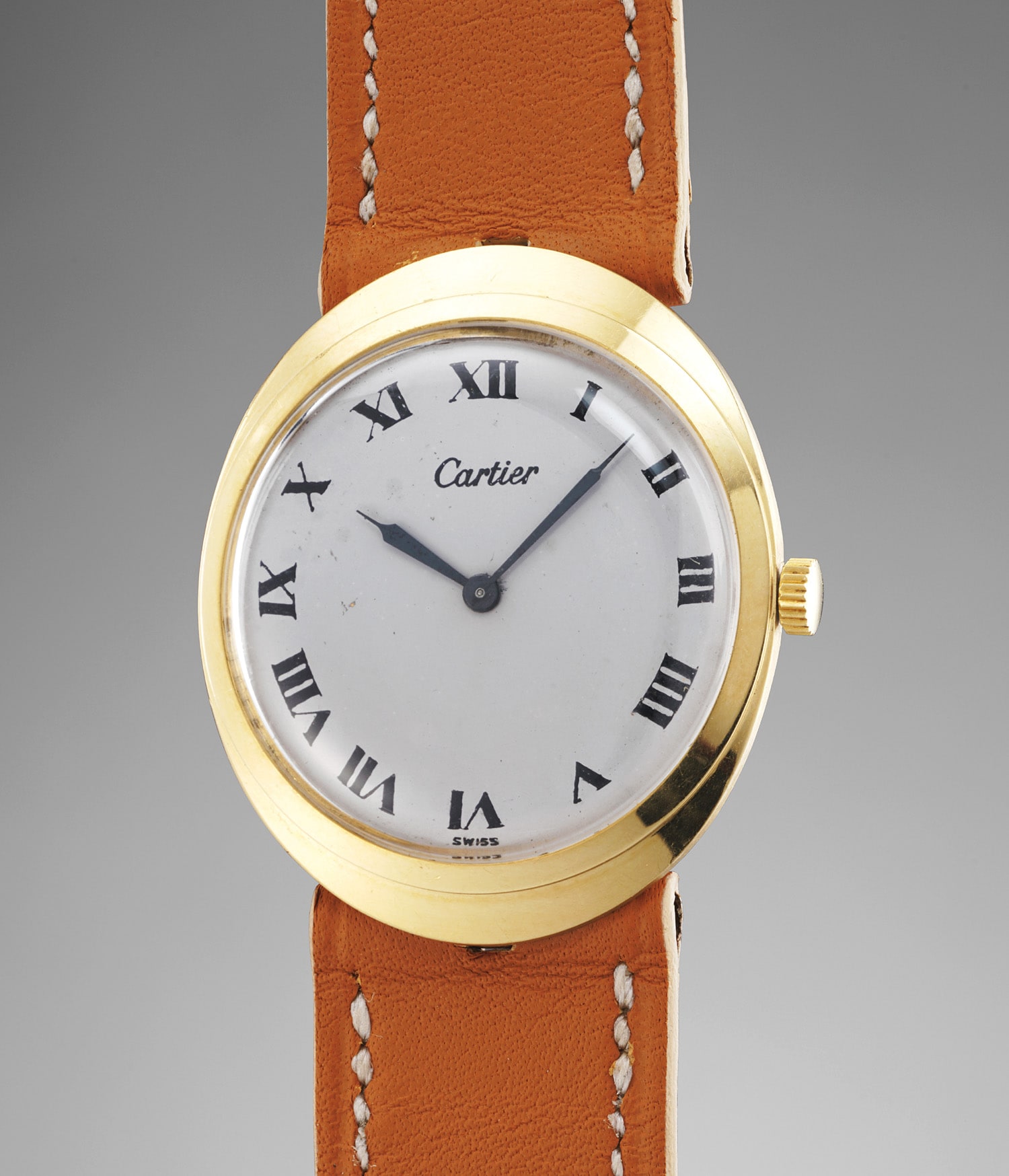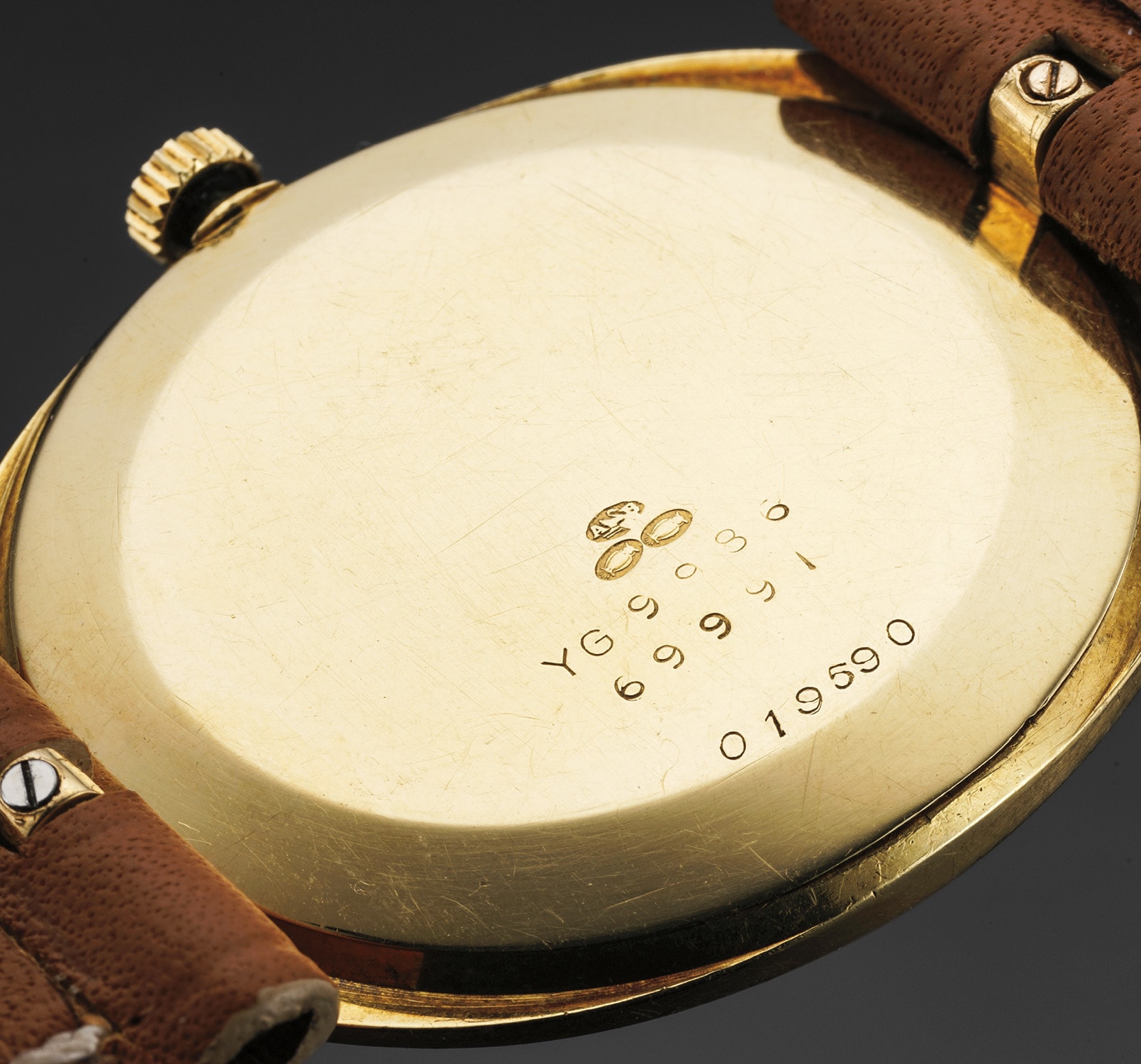



Lot offered with no reserve
124
Cartier
A highly rare and attractive yellow gold oval-shaped wristwatch with movement by Bueche Girod
- Estimate
- CHF2,000 - 4,000•€1,900 - 3,800$2,100 - 4,200
CHF2,250
Lot Details
- Manufacturer
- Cartier
- Year
- Circa 1970
- Case No
- YG 9986, 69991 and 019590
- Material
- 18K yellow gold
- Calibre
- Manual, 17 jewels
- Bracelet/Strap
- Leather
- Clasp/Buckle
- 18K yellow gold Cartier deployant buckle stamped EJ with Cartier hand stamped numbers
- Dimensions
- 27.5mm Width and 32MM Length
- Signed
- Dial signed, case with Cartier hand stamped numbers, movement signed Bueche Girod
Specialist
Full-Cataloguing
Catalogue Essay
Offered without reserve, this wonderfully-preserved watch displays a stepped oval-shaped case that recalls the "Ellipse" design that was so in-vogue in the 1970s. Incredibly stylish, it best exemplifies Cartier's design know-how during the 1960s and 1970s.
While the case displays Cartier hand stamped numbers, the movement is signed by Bueche Girod. There are most notably French import marks on the outside caseback in the shape of the owl. Even the clasp is stamped with Cartier hand stamped numbers, and bears the maker's mark for Edmond Jaeger, which is denoted by an hourglass flanked by "E" and "J".
While the case displays Cartier hand stamped numbers, the movement is signed by Bueche Girod. There are most notably French import marks on the outside caseback in the shape of the owl. Even the clasp is stamped with Cartier hand stamped numbers, and bears the maker's mark for Edmond Jaeger, which is denoted by an hourglass flanked by "E" and "J".
Cartier
FrenchWith the Constitution of 1848 came a new standard for luxury in France. Founded one year prior by Louis-Francois Cartier, the house of Cartier was one of the first to use platinum in jewelry making. This incredibly expensive material became the stepping-stone for Cartier to experiment in form, mechanisms and attitude. It helped men move from pocket watches to wristwatches, effectively making the watch much more functional and prominent in a man's overall wardrobe.Cartier did not only touch on functionality. Inspired by a commissioned painting by George Barbier featuring a black panther at the feet of an elegantly bejeweled woman, Cartier began incorporating wild animals in his designs—most notably, Cartier Panthère rings, bangle bracelets and watches. Yet it wasn't until the late 1960s that the house of Cartier debuted their iconic yellow and rose gold LOVE collection, which includes the famous bracelet that only a special screwdriver can open.
Browse Maker